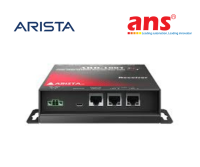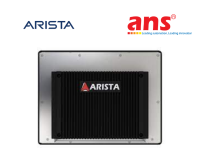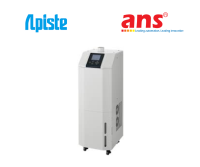About BFI
The BFI Automation, Dipl.-Ing. Kurt-Henry Mindermann GmbH, is a German Company founded in 1973.
The laboratory, manufacturing and administration facilities are located in Ratingen, in the Rhine/Ruhr area, close to the Rhine/Ruhr airport in Düsseldorf.
Flame monitoring and evaluation, including temperature meansurement, systems are only some of a the many unique products manufactured by BFI Automation. The products are the result of many years collaboration with major power utilities, leading industrial enterprises and research organisations throughout the world.
As a result, BFI Automation has gained an international reputation of innovation, technical expertise and quality.
For further information on BFI Automation products please write or phone for details.
Products Overview
Flame Monitoring System 3000/4000
Feature
- Fail-safe design, selfchecking
- Solid state electronic
- German TÜV approved, DIN DVGW, DIN-CERTCO registered
- Indicates flame instability which permits an early warning of flame-outs
- Monitoring of nearly each combustion with oil, gas and coal
- Special sensors for gasturbines, refinerys and chemical industry
- Analog and digital outputsignals
- Explosion proofed housings and LWL-technique
Safety
The flame monitoring system 3000 / 4000 was developed in view of safety progress and optimal availability of combustion plants. Its objective is to safety and reliably monitor furnace systems. The system can differentiate between various burners in almost every furnace and its therefore able to monitor selectively. Due to the continous, fully- electronic self-checking
system, all instruments are authorised in accordance to the DIN DVGW decree (German Industrial Standards) and the TÜV examination for continious opertion (Technical Surveillance Association). Furthemore, the requirements for TRD 411-414(technical directions for steam boilers) have been fulfilled.
Availability
The abrasion-free sensory technology makes the 3000 / 4000 flame monitoring system almost maintenance-free and allows operation of the furnace to be long-lasting and reliable.
Compact Flame Controller
This in expensive, self-contained flame scanner and monitoring gain-controlled amplifier housed in an IP65 enclosure (dust and weather proof). It allows fast installation on all oil and gas fired burners of any capacity rating, without requiring additional amplifier plug-in units or special scanner cabling.
- fail-safe and self-monitoring
- for continuous or intermittant burner operation
- German TUEV-approved and DIN DVGW-registered
- UL and CSA approved (see device descriptions)
- fully electronic
- Power supply: 24 VDC
- Relay contact rating: 60 VDC change over
- 0/4-20 mA flame signal output
- aviable with EX-protected housings and in fibre optic technology
- Fast and easy mounting to 1“ sighttube
Fibre optic techology
The fibre optic technology is a extension of our program and is characterized by high temperature resistance, ruggedness against vibration and solid construction. The system consists of a fibre optic cable and the otpo electrical converter.In the opto electrical converter the concept of the proven BFI flame scanner series is used, which makes the signals for the flame amplifier aviable. In the same way is the implementation of the compact flame controller possible. Housing versions for ATEX zone 1 and zone 2 are aviable.
Standard version
The standard version of the fibre optical cable comprises the probe ´SKL´ and the fibre optic cable, which aviable in different length. The probe head ´SKL´ is mounted outside of the burner. This version is mainly used for gas turbines and allows a safe and failure-free operation since decades of years.The standard version of the fibre optical technology allows the installation at places with high ambient temperature, heavy vibrations, bad tight spaces or missing cooling conditions.
Fibre optic lances
Fibre optic lances are mainly used for power plant burners with very long or swivelling burner installations inside which are inhibits the assembly of the flame scanner on the burner plate. To monitor the burner operation with high availability it is useful to collect the flame radiation of the primary combustion zone. Due to the high temperature resistance and the small robust style the lance can be installed inside the burner very near to the combustion process.
Special models
Customer specific fibre optic constructions are possible project-related. Often it is necessary to use air-purged or water-purged versions.
Technical properties
Spectral transmission:
IR/VIS fibre optic 430 - 2400 nm
UV/VIS fibre optc 260 - 1200 nm
Cable diameters:
approx. 17 mm
Standard temperature range:
-20…+250°C
Ht- Version temperature range:
-20…+350°C
Degree of protection probe head:
IP 68
Degree of protection OE- converter:
IP 65
Standard length:
2m, 3m, 5m, 7m, 10m
Variable length on request:
1m....20m
Pyrometer
Radiation Pyrometer
IntroductionThe combustion process with energy utilization includes a vast number of highly complex partial processes. They interact with each other, can only be insufficiently determined beforehand and in many cases recording by measuring is hardly possible. This particularly applies for grate firings, which are used for thermal residue incineration. These applications increasingly demand innovative solutions for emission optimized process management, which enables maximum energy conversion at justifiable costs for equipment and operation. This goal can only be achieved by the consequent use of fast sensor and actor technology to record and influence the incineration sequence continuously and in a locus-dependent way.
The furnace capacity control is an essential component for controlling a residue incineration. It processes, among others, process parameters like live steam quantity and the flue gas parameters temperature, oxygen content and pollutant concentration. Fully automatic process controls take over the regulation of the primary air quantity in the primary combustion zone, among others.
The optimized combustion control considerably reduces the generation of CO and NOx. The emissions in the combustion chamber are evenly distributed and the downstream flue gas cleaning installations are thus optimally utilized.
However, events after the primary combustion must also be included in the control concept. Secondary effects, such as consumption, very often occur on the finned walls, directly above the tamping. These are caused by incomplete combustion, which attack the pipes by means of aggressive gases (radicals) under a lack of oxygen. Bonded oxygen is withdrawn, which causes the steel to become brittle or leads to large area erosion. After-burning air must be explicitly fed in to avoid availability restricting and cost-effective corrosion. This air supply should be metered in such a way, that these effects are only just avoided, however without any negative effect on the overall balance of the air ducting system. The UV Radiation Pyrometer SPM serves just this purpose. It records and displays the consumption causing flame radiation, which is mainly emitted by radicals. This enables the control of the secondary air, which ensures a complete afterburning. This efficiently reduces corrosions on plant components.
Features
- ATEX approved
- fully electronic design
- Degree of protection IP65
- Spectral range from 280nm to 1100nm, depending on application and type
- Cable lengths of more than 1000 m without additional drivers
- Also with Ex protection
- Wide range of accessories, such as adjustment devices and heat insulators
Flame monitoring for Claus Facilities
Flame monitoring for acid gas (claus- process)
IntroductionThe desire for technical process with respect to safety, together with optimum availability and economy in closed plants, has led to considerable improvements in the flame monitoring and analysis sectors as well. The task was to create a method of flame monitoring which would reliable monitor the hot gas and acid gas flames under all kinds of difficult operating conditions. Because of the complex interdependency of the physical and chemical process involved, criteria must be chosen for the combustion process that can be used as parameters for accomplishing this task.
Principle
During combustion, energy is released in the form of electromagnetic radiation; this radiation is distributed over a wide spectrum depending on the fuel and is defined by specifying the wavelength. The radiation intensity pulsates when oxygen permeates the fuel; at the same time, amplitude modulation of the radiation occurs.
Flame monitoring
Electromagnetic radiation can be converted by radiation receivers into a measurable electrical quantity in accordance with an established physical law. As a rule one can distinguish between photoelectric and thermal detectors.
Thermal detectors are in principle uniformly sensitive over the entire radiation spectrum and can be made selective for specific ranges of wavelengths by secondary effects, as for example with spectral filters. Combustion of H2S creates a powerful absorption range between 270 and 400 nm. This is the reason, moreover, why it has not been possible to satisfactorily receive these with ultraviolet instruments.
The new method also makes use of the phenomenon that, as a result of the recirculating combustion gases in the flame envelope, their temperature exhibits not only fluctuations in time but above all local fluctuations. By measuring the difference in radiation intensity at two selected points, the constant signal can now be completely eliminated. Even in the low-load range, the signal amplitude resulting from the existence of the flame is many times greater than that produced when there is flame failure.
Features
- Fail-safe, self-monitoring
- Suitable for intermittent and continuous operation
- TÜV tested
- ATEX approved
- DVGW, DIN-CERTCO, CSA and UL approved
- Approved acc. to EN 230 and EN 298
- Fully electronic design
- Degree of protection IP65
- Flame monitoring in the spectral range from 250nm to 7000nm, depending on application and type
- Cable lengths of up to 1000 m without additional drivers
- Also available with EX-protection
- Wide range of accessories, such as adjustment devices and heat insulators
Pressure barrier
The pressure barrier prevents the flame scanner housing against over pressure from combustion chambers. At the same time the flame scanner can be removed without pass out of toxic or hot gases. |
Heating insulator
The heating insulator decreases the temperature flow between combustion process (boiler wall or burner construction) and flame scanner and protects him against overheating. |
Downloads:
- Heat Insulator
( PDF, 8 KB)
PDF, 8 KB)
bfi automation vietnam asia _ ans vietnam
Hãy liên hệ với chúng tôi để có được giá tốt nhất !

Công Ty TNHH TMDV Anh Nghi Sơn
| địa chỉ | D3, KDC Miếu Nổi, Đinh Tiên Hoàng, Phường 3, Quận Bình Thạnh, TPHCM
| mã số thuế | 0310692382
| điện thoại | + 84 . 8 . 3517 0401/02 | fax | +84 . 8 . 3517 0403
| email | ans.vina@ansvietnam.com | sales.ans@ansvietnam.com
| website | www.ansvietnam.com
| liên hệ trực tuyến | Skype | Yahoo












































